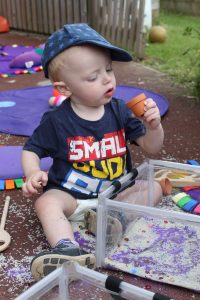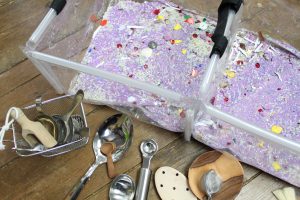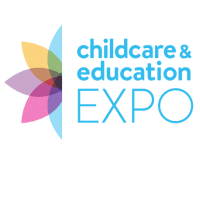Messy Learning
19th February 2018
Share this entry:

Messy play is defined as exploratory sensory-rich play with wet, dry or in-between textured materials. The emphasis should be on the process rather than any end product, so fun though it may be, it’s not about making snowmen from playdough or gloop. You may love everything about messy play or loathe it with a passion. You may love watching children’s reactions to messy play and wonder how they are benefiting from these material engagements? You may even be an advocate of messy play, so long as it’s not in your home! Whatever your viewpoint one thing is clear, there’s a lot more to messy play than just mess and fun.
By exploring and experimenting with low-cost resources like shredded paper, gloop, sand, clay, shaving foam or Gelli-baff children learn about themselves and the world around them using all their senses. As children change resources, follow their interests, develop thinking, discover the essence of words and receive calming feedback, the sensory, wellbeing, behavioural and curriculum benefits of Messy Play become clear.
Although described as Messy play, this is not necessarily a prerequisite for engagement and learning. Depending upon the materials chosen it could be really messy, such as cooked couscous or gloop; dry and contained, like a container of seedpods or dried lentils; or in-between, that is using resources which although wet are not sticky, such as playdough.

If this has reignited your interest in messy play, or you’re already an ambassador for messy engagements then I’d love to hear how you’re supporting children to think with materials. You can start by responding to this survey or contacting me to share your best and worst messy play experiences – you never know you may even get your name, ideas and experience in print!
Sue’s seminar at Childcare Expo will be focussing on Learning Through Mess – Can Messy Play really support children’s development and learning? You can catch Sue on the Early Years Theatre on Saturday 3rd March 2018 between 1.45pm and 2.30pm. See the full programme here.
Why attend Childcare Expo?
Join over 2,500 like-minded individuals from the early years sector who are dedicated to improving both practice and their childcare settings.
Attend educational seminars to credit your CPD
Meet the experts to have your questions answered
Receive fantastic onsite offers and discounts
Experience expert-led informative hands-on workshops
Network with peers and industry players
Pick up hundreds of new product ideas and services
And most of all, enjoy a great day out with your colleagues




